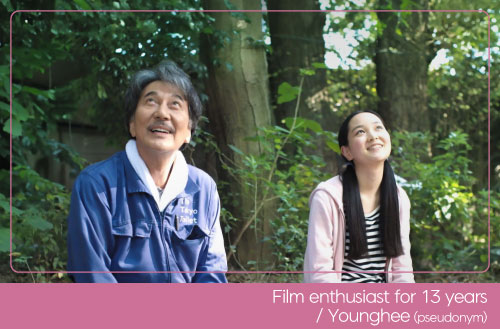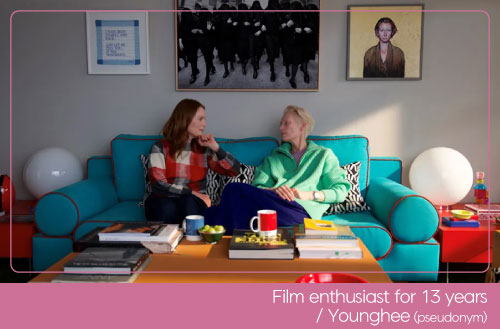
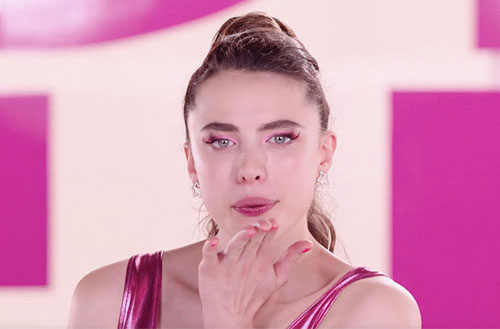
-
-
- 메일 공유
-
https://stories.amorepacific.com/en/amorepacific-substance-where-beauty-ends-the-search-for-authentic-self
[Substance] Where Beauty Ends: The Search for Authentic Self
#1. Series on Diverse Beauty Stories in Film

Columnist Younghee (pseudonym)
Editor’s note
Film is an artistic medium beyond mere entertainment, capable of deeply capturing the flow of the times and the human psyche. Through this column, I aim to explore various aspects of beauty based on film reviews. At times, I will interpret the contemporary significance embedded in films, and at other times, I will focus on the aesthetics of direction to highlight their emotional aspects.
I chose ‘film’ as the subject of my writing because movies, in their roughly two-hour duration, provide viewers with time for contemplation and, depending on their themes and direction, offer infinite possibilities for interpretation and discussion. Additionally, films that reflect the zeitgeist are highlighted at film festivals with long-standing global traditions and authority.
Over the next six months, I will share my personally interpreted reviews of recent award-winning films from major international film festivals, hoping to convey the depth and emotion that films possess. I look forward to taking this journey together.
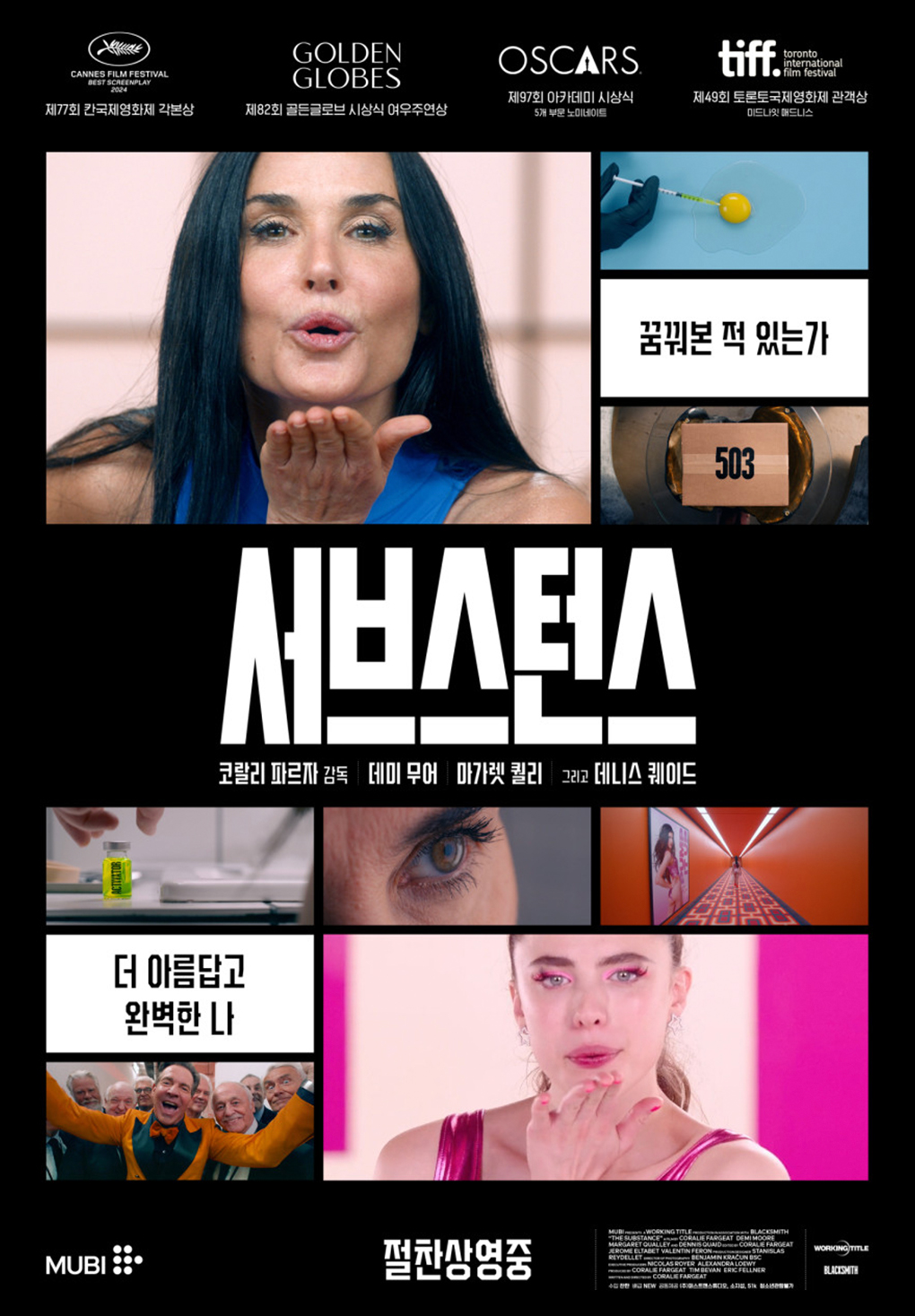
Substance movie poster (Source | Import: Challan, Distribution: NEW)
#INTRO
The first film I’d like to introduce is “Substance,” which has remarkably surpassed 550,000 viewers during the current film industry slump, achieving the fourth-highest record among R-rated independent art foreign films in Korea. Substance won Best Screenplay at the 2024 Cannes Film Festival and Best Actress at the Golden Globes, but when the film’s star, Demi Moore—a strong contender for Best Actress at the 2025 Academy Awards—failed to win, reactions noted that this outcome ironically emphasized the film’s central theme.
1 Film Introduction (Spoiler Alert)
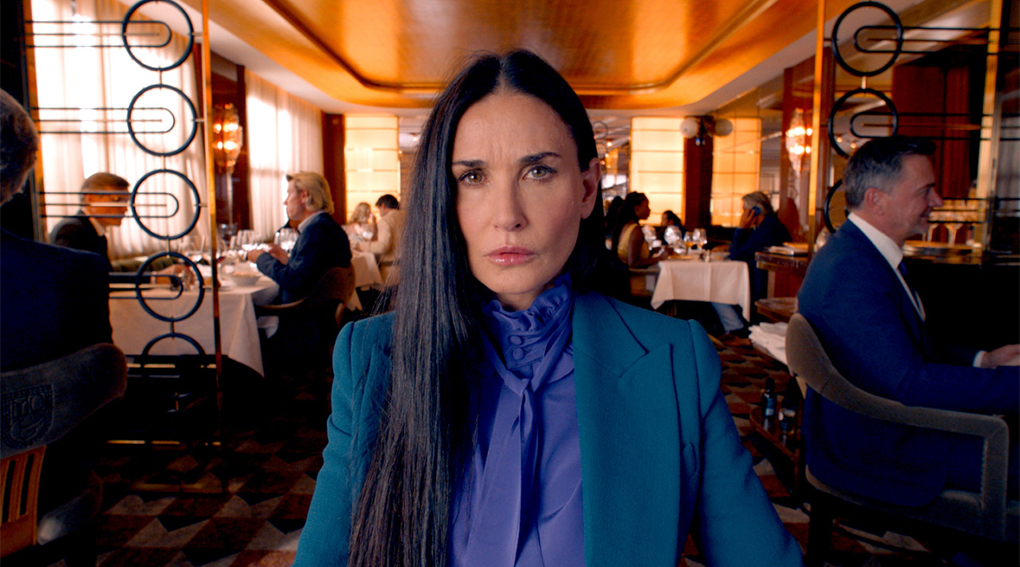
Substance still cut (Source | Import: Challan, Distribution: NEW)
The protagonist of Substance is former star Elisabeth Sparkle. When she turns 50, she receives notice that she’s being removed from the popular program she hosts for “not being young and sexy enough.” She takes a drug called “Substance,” which creates “a better version of me.” As a result, Elisabeth’s back ‘literally’ splits open, and a younger, more perfect body named “Sue” emerges. Following the rules for taking “Substance,” Elisabeth alternates between two bodies every week to continue her career. Still, as time passes, she increasingly conflicts between ‘her true self’ and ‘the image society wants.’

Substance still cut (Source | Import: Challan, Distribution: NEW)
While Substance uses the broadcasting industry, which blatantly commodifies beauty as its backdrop, it goes further to portray in extreme ways how lookism affects individuals. Another reason this film has garnered significant attention is that it was directed in a genre that more vividly reveals our real-life obsessions with ‘youth’ and ‘appearance.’ The shocking presentation through body horror visually embodies the psychological pressure on individuals forced to conform to ‘standardized beauty’ in modern society.
2 Our Reflection in the Mirror of ‘Substance’
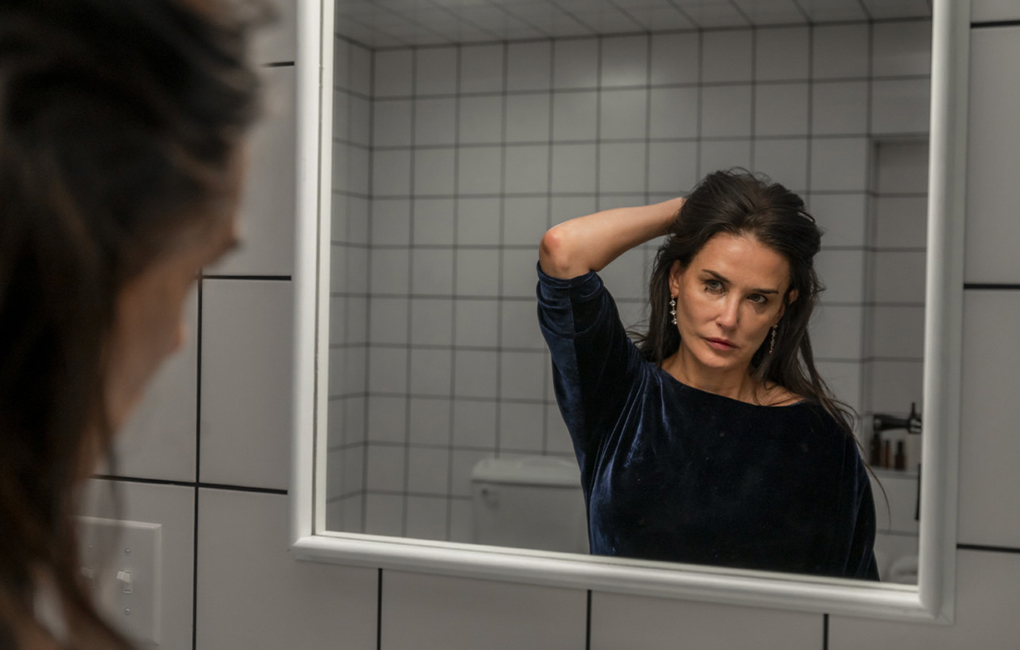
Substance still cut (Source | Import: Challan, Distribution: NEW)
The scene where Elisabeth gives up going out because she can’t finish her makeup was more realistically cruel than any other scene. Elisabeth and Sue’s bodies are reflected through exaggerated close-up camera lenses. They are also carelessly evaluated through the words of producer Harvey and broadcasting industry people. The objectification by others’ gazes is ultimately internalized in the bathroom mirror reflection, resulting in Elisabeth smearing her aged face in frustration.
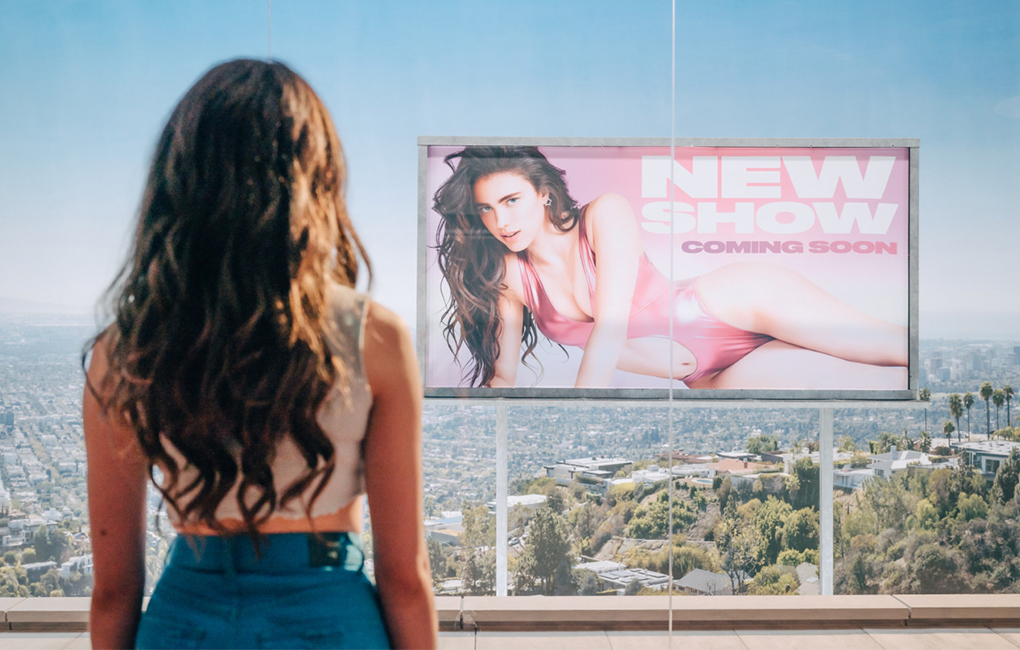
Substance still cut (Source | Import: Challan, Distribution: NEW)
Perhaps we are creating another ‘Sue’ within ourselves, hoping to see Sue instead of Elisabeth in the mirror? Watching Elisabeth deny herself in the mirror, I was reminded of countless modern people who experience the gap between reality and ideals due to excessive editing on social media. The PD of the popular observation entertainment program <Single’s Inferno>* revealed in an interview that their top casting criterion is ‘people whose Instagram photos match their actual appearance.’
This work has created a record response, which may be evidence showing that many people living in this era are tired of social standards and obsessions. Because Korean society tends to be relatively more interested in age and appearance, the questions the film raises may have resonated more realistically with the audience.
3 New Beauty in an Aging Era
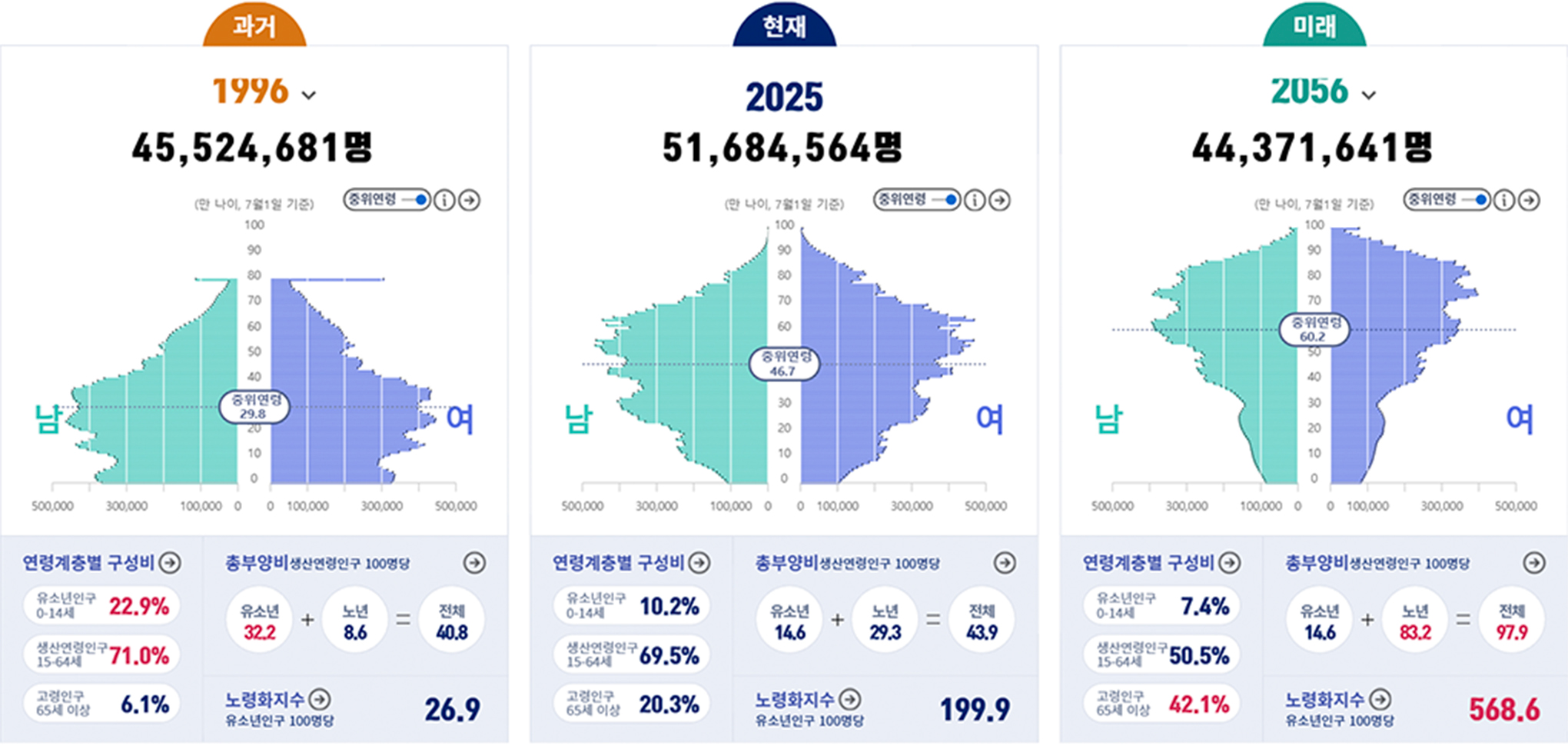
Source | Statistics Korea Population Dashboard
Let’s shift our focus from the film to the real world momentarily. Korea is rapidly entering an aging society. In 2025, the median age of South Korea’s population is 46.1 years. The median age refers to the person’s age at the exact middle when arranging the total population in order of age. According to Statistics Korea Census, the median age was 29.8 years in 1996 and is projected to rise to 60.2 years by 2056. In other words, when those born in 1996 reach the age of 60, more than half of South Korea’s population will likely be legally classified as seniors, aged 60 and above.

Source | Hwajung Choi YouTube Channel @hellochoihwajung

Source | Milanonna YouTube Channel @Milanonna
Amid these changes, social perceptions of beauty are gradually diversifying. An era is dawning where each generation’s unique charm and individuality, regardless of age, are receiving more attention. More people respect and express the beauty discovered throughout their life’s journey rather than limit their value by age.
Recent changes include senior models over 60 appearing in fashion campaigns and beauty advertisements, and people confidently revealing their natural wrinkles and gray hair rather than hiding them. Influencers like 60-something actress Hwajung Choi with her YouTube channel “hellochoihwajung” and 70-something designer Myungsook Jang with her YouTube channel “Milanonna” are increasingly sharing their lifestyles and beauty routines without being bound by age. Each in their way, they reveal the unique charm that comes with age, showing that a single standard can never define beauty.

Substance still cut
(Source | Import: Challan, Distribution: NEW)
“It gets harder every time. Remembering that you still deserve to exist! That this part of you still has value! That you are still precious!”
This is the question posed by the elderly Subject 207, whom Elisabeth encounters at a café. I believe this line contains the message that permeates Substance. The questions Substance raises do not remain confined to the film but allow us to think about what beauty is. Beauty shines more abundantly when expressed in various forms rather than trapped in standardized criteria. In our changing society, don’t we need a new perspective and approach to viewing beauty?
In this context, the film title ‘Substance’ is highly symbolic. This word means the core that exists beyond the outwardly visible image—the ‘essence.’ The film continuously raises questions about essence, drawing our attention back to the value of beauty that each of us experiences in our way.
#OUTRO
Beauty is a concept that a single standard cannot define—it continuously expands according to era and culture. At Amorepacific, we are conducting a New Beauty Movement to help every person of this era discover their beauty and realize a healthy and happy life.
Presenting new perspectives on beauty in an aging era and helping more people discover their beauty makes the world more beautiful. With this concluding one-line review, I ask for your support in creating beauty for the future.

One-line review of Substance: Beauty is the taut tension between appearance and essence.
-
Like
0 -
Recommend
1 -
Thumbs up
0 -
Supporting
0 -
Want follow-up article
0



